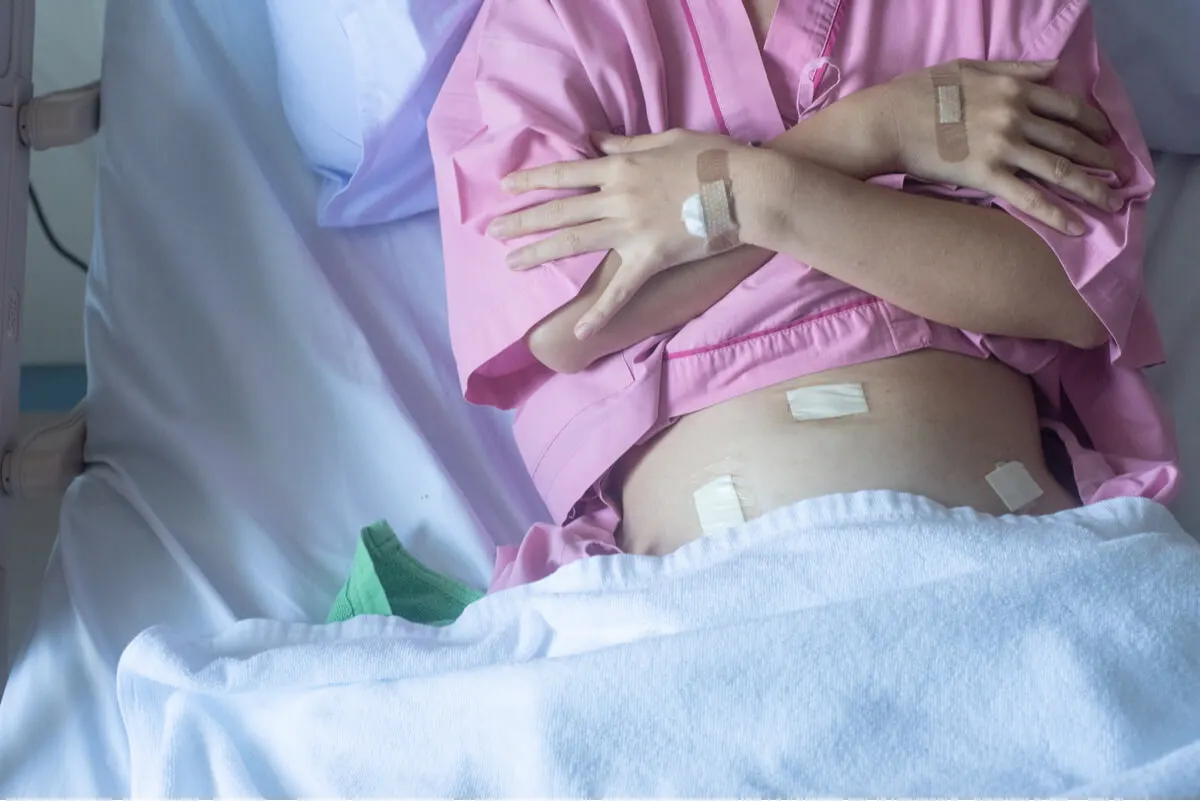Bindi Irwin Talks about Her Life with Endometriosis


Written and verified by the doctor Leonardo Biolatto
The young Australian and conservationist, Bindi Irwin, took advantage of Twitter exposure to talk about the endometriosis that has been accompanying her for a decade. Aged 24, the singer and dancer gave details of her suffering and the symptoms that alter her quality of life.
Extreme fatigue, unexplained tiredness and cyclical pain are signs that translate into irritability, low productivity and absenteeism from work due to the disorder. Women with this disease have to deal with a situation that hinders their projects.
In addition, endometriosis can be under diagnosed. Many patients go through doctors and clinics without finding an accurate diagnosis, thus delaying the appropriate approach. Indeed, Irwin’s journey was not without these vicissitudes:
For 10 years I struggled with insurmountable fatigue, pain and nausea. A doctor told me it was just something you deal with as a woman and I gave up completely, trying to survive the pain.
These experiences add trauma to the physical fact. There is suffering that is not recognized and confusing sensations appear, to the point of thinking that there is no solution or that the condition is a “natural consequence” of being a woman.
What is endometriosis?
This condition consists of the growth of endometrial tissue outside the uterus. The endometrium is the innermost layer of the womb, being the part that is shed during menstruation and the part that will receive the fertilized egg when a pregnancy begins.
As it grows outside its natural place, its bleeding cycle occurs in places that are abnormal for the human anatomy. Therefore, there is pain in the regions where this malpositioned (ectopic) tissue is located.
It is usually located in the fallopian tubes and ovaries.
This location in the pelvis, outside the uterus, is the cause of the intense discomfort that appears almost once a month in patients. The ectopic endometrium becomes inflamed by hormonal action and even bleeds, as if it were actually inside the womb.
The problem is that in the medium term, the inflammation also affects the surrounding tissues. That is, the fallopian tubes and ovaries accumulate fluid, swell, try to heal after each menstrual cycle and produce excess fibrous tissue. This tissue causes adhesions within the pelvis and leads to infertility in women.

What are the symptoms of endometriosis that Bindi Irwin suffers from?
Irwin commented that fatigue, pain and nausea have been the most disabling symptoms for her. In general, these manifestations recur every month, in accordance with the menstrual cycle and the stimulation of female hormones.
The most frequent symptoms of endometriosis are the following:
- Dysmenorrhea: it is the pain that appears with menstruation, but in an excessive manner. To the point of causing the woman to rest.
- Dyspareunia: this is the pain that appears when having sexual intercourse.
- Dysuria: some women report discomfort when urinating. Especially those who have developed fibrous adhesions around the bladder.
- Tiredness: during menstruation, women with endometriosis may feel extreme fatigue that forces them to rest. But it can also happen that there is imperceptible bleeding due to misplaced endometrial tissue. This would lead to anemia and, with it, fatigue.
- Changes in bowel movements: the inflammation inherent to the disorder and the proximity of the ectopic tissue to the digestive tract favor the alteration of evacuatory rhythms. There are patients with diarrhea and others with chronic constipation. Nausea and vomiting are not uncommon.
Bindi Irwin and her surgery to treat endometriosis
In an Instagram post, Bindi Irwin showed herself freshly operated on for her endometriosis, in a hospital bed. This complemented her appearance on Twitter to narrate the misadventures with her disorder for 10 years.
In her account, the young Australian refers that doctors removed many foci of ectopic endometrial tissue. And they were even surprised to ask her how she had managed to live all this time with such a scattering of lesions inside her body.
Surgery for endometriosis is an option that should be evaluated with the treating physician and according to the patient’s age and fertility prospects. When there is no desire to conceive in the future and the symptoms are very intense, it is possible to remove a large part of the pelvic contents, including the affected ovaries.
However, in young patients who wish to become pregnant, a more conservative and punctual surgery is performed. The foci of ectopic tissue are sought and removed one by one. In this way, the uterus and ovaries are preserved so that fertilization and gestation are possible.
Bindi Irwin underwent this surgery to treat her endometriosis. In her account of the events, she mentions the removal of 37 lesions. One of them was a “chocolate cyst”(endometrioma), which is a larger, dark brown fluid-filled formation.
After the procedure, treatment is usually not complete. Doctors usually indicate the continuation of the approach with medication, almost always based on hormonal therapies. The classic contraceptives are prescribed, as well as gonadotropin-releasing hormone and progestin agonists and antagonists.

A young woman’s message of hope
Many young women live with endometriosis, just like Bindi Irwin, without knowing it or waiting for an accurate diagnosis. The Australian activist’s message is one of hope for sufferers.
There are ways to access new and effective treatments. But to do so, it is necessary to have more information about the condition and to reach health professionals interested in providing a solution for their patients.
We know more and more about endometriosis. However, there is still a long way to go to achieve equal opportunities for patients.
All cited sources were thoroughly reviewed by our team to ensure their quality, reliability, currency, and validity. The bibliography of this article was considered reliable and of academic or scientific accuracy.
- Agarwal, S. K., Chapron, C., Giudice, L. C., Laufer, M. R., Leyland, N., Missmer, S. A., … & Taylor, H. S. (2019). Clinical diagnosis of endometriosis: a call to action. American journal of obstetrics and gynecology, 220(4), 354-e1.
- Araya, N. M. U. (2019). Actualización en los puntos clave de la endometriosis. Revista Médica Sinergia, 4(05), 35-43.
- Kho, R. M., Andres, M. P., Borrelli, G. M., Neto, J. S., Zanluchi, A., & Abrão, M. S. (2018). Surgical treatment of different types of endometriosis: Comparison of major society guidelines and preferred clinical algorithms. Best Practice & Research Clinical Obstetrics & Gynaecology, 51, 102-110.
- Ramin-Wright, A., Schwartz, A. S. K., Geraedts, K., Rauchfuss, M., Wölfler, M. M., Haeberlin, F., … & Leeners, B. (2018). Fatigue–a symptom in endometriosis. Human reproduction, 33(8), 1459-1465.
- Quintero, M. F., Vinaccia, S., & Quiceno, J. M. (2017). Endometriosis: Aspectos Psicologicos. Revista chilena de obstetricia y ginecología, 82(4), 447-452.
This text is provided for informational purposes only and does not replace consultation with a professional. If in doubt, consult your specialist.








